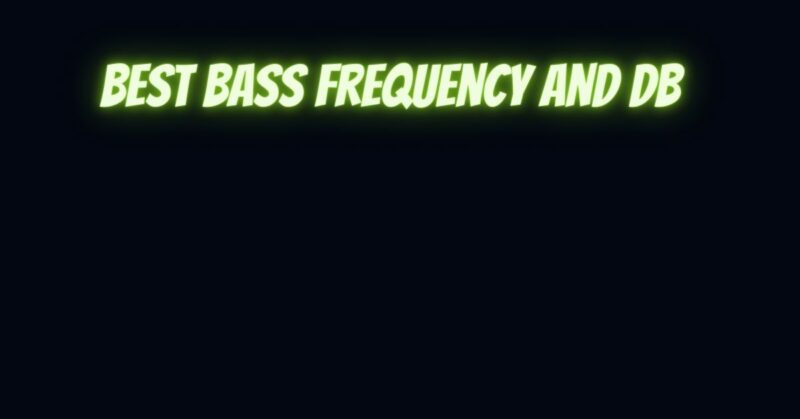The pursuit of perfect bass is a journey that involves finding the right balance of frequency and amplitude to create a powerful and immersive auditory experience. The interplay between bass frequency and dB level is a critical aspect of this endeavor. In this article, we’ll delve into the considerations, benefits, and factors that influence the selection of the best bass frequency and dB level, helping you fine-tune your audio setup for optimal bass performance.
Understanding Bass Frequency and dB Level:
- Bass Frequency: Bass frequencies encompass the lower end of the audio spectrum, producing deep and resonant tones that contribute to the richness and impact of audio. These frequencies typically range from 20 Hz to 250 Hz.
- dB Level (Decibel): dB is a unit of measurement used to express the intensity or amplitude of sound. In the context of bass, dB level refers to the volume or strength of the bass frequencies.
Considerations for Selecting the Best Bass Frequency and dB Level:
- Listening Preferences: Your personal preferences play a significant role in determining the ideal bass frequency and dB level. Some listeners prefer a pronounced and impactful bass, while others prefer a more balanced and subtle presentation.
- Audio Content: The type of audio content you enjoy influences the bass frequency and dB level you choose. Different genres and media require different approaches to bass enhancement.
- Speaker and Subwoofer Capabilities: The capabilities of your speakers and subwoofers impact how well they can reproduce specific bass frequencies and dB levels. High-quality components designed for bass accuracy enhance overall performance.
- Room Acoustics: The acoustics of your listening environment significantly impact how bass frequencies and dB levels are perceived. Room size, shape, and furnishings can affect bass distribution and resonance.
Benefits of Finding the Right Bass Frequency and dB Level:
- Impactful Sound: Dialing in the right bass frequency and dB level can result in an impactful and immersive auditory experience, enhancing the emotional impact of music and audio.
- Customization: Tailoring the bass frequency and dB level to your preferences allows you to create a customized audio environment that aligns with your taste.
- Enhanced Audio Content: The right bass settings can bring out the nuances in different audio content, from movie sound effects to intricate basslines in music.
Creating a Balanced Bass Experience:
Achieving the best bass frequency and dB level involves striking a balance between depth, impact, and overall sound quality:
- Room Acoustics: Understand how room acoustics influence bass resonance and distribution. Experiment with speaker and subwoofer placement to achieve optimal bass coverage.
- Listening Tests: Experiment with different bass frequencies and dB levels while listening to various genres of music and audio content. Adjust the settings until you find the ideal combination that suits your preferences.
- Feedback and Testing: Seek feedback from other listeners and conduct A/B tests to objectively compare different bass settings and their impact on the overall audio experience.
Selecting the best bass frequency and dB level is a dynamic and personalized process. By considering your listening preferences, audio content, speaker capabilities, and room acoustics, you can find the optimal combination that delivers a powerful, impactful, and balanced bass experience. Fine-tuning the interplay between bass frequency and dB level allows you to unlock the full potential of your audio setup, creating a sonic journey that resonates harmoniously with your audio aspirations.


